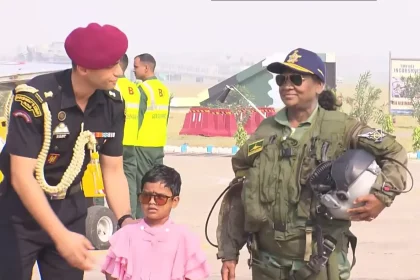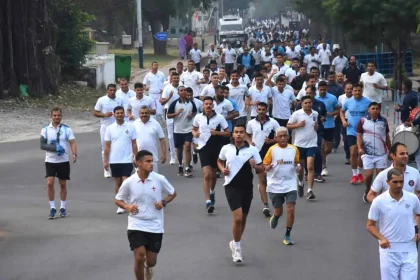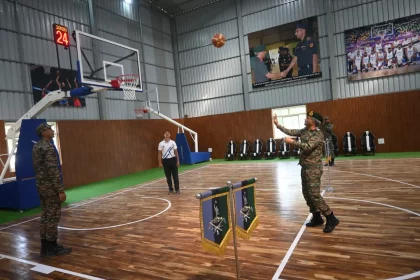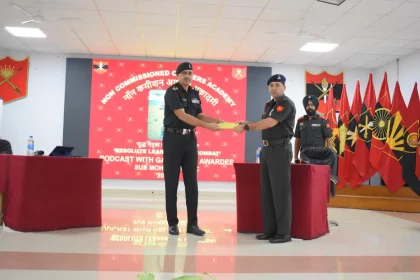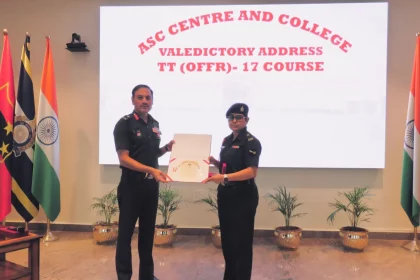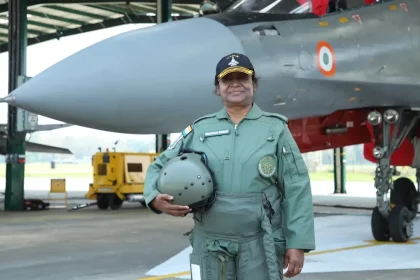President Droupadi Murmu Achieves Milestone with Rafale Fighter Jet Sortie at Ambala Air Force Station
This sortie not only represents a personal achievement for the President but also aligns with broader efforts to showcase the…
Air Force Station Pune to Host First-Ever “Sekhon Indian Air Force Marathon 2025” on 2 November
Event dedicated to Flying Officer Nirmal Jit Singh Sekhon, PVC — celebrating valour, fitness, and the Air Force spirit.
Western Command Inaugurates State-of-the-Art Basketball Node at Patiala Under Mission Olympics
New sports facility to boost Army’s professional basketball training and holistic fitness.
NCO Academy Dhana Hosts First-Ever ‘Veergatha’ Podcast with Shaurya Chakra Awardee Subedar Mohan Ram
Gallantry awardee shares combat leadership lessons and battlefield experiences with NCO trainees.
Major Nirma Choudhary Named Best Student as Tank Transporter Management Course Concludes at ASC Centre & College Bengaluru
Course strengthens operational logistics and leadership capabilities among ASC officers of the Indian Army.
President Murmu to Take Historic Sortie in Rafale Fighter Jet from Ambala on Wednesday
The President will become the first Indian head of state to fly in a Rafale, highlighting India’s growing air power…

